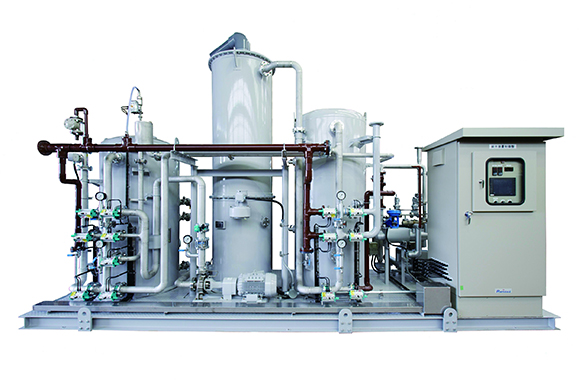Environment
324 products.
Filter by business area
[Close]
110 products.
[Close all]
Biocatalyst
[Close]
We launched the world's first biocatalytic industrial production of acrylamide in 1985 and have been offering this product since 1999.

DURABIO™ is a bio-based polycarbonate resin derived mainly from plant-based isosorbide. Compared with conventional polycarbonate resin (hereafter abbreviated PC resin) made from bisphenol A (hereafter abbreviated BPA), DURABIO™ features high transparency, excellent optical properties, and outstanding scratch resistance. Its puncture impact behaviour are comparable to those for PC resin. DURABIO™ is a plant-derived polymer but is not biodegradable. It has excellent durability, making possible its deployment in a wide variety of applications such as for optical ・energy related components, a substitute for high-performance glass components, as well as for electronic equipment ・ automotive housings ・ interior and exterior decor.

Mitsubishi Chemical Corporation has developed BioPTMG, an environmentally friendly polyol that is manufactured from bio feedstocks.
BioPTMG has the same performance as petroleum-derived PTMG as a raw material for polyurethane resins and polyester resins, and has excellent impact resilience, wear resistance, hydrolysis resistance, flexibility at low temperatures, etc.
Taking advantage of its characteristics, it can be used in a wide range of fields from interior and fashion to industrial materials.
In case you are interested in our BioPTMG we are ready to send you samples for your own evaluation.
- Grades:
- BioPTMG650、BioPTMG1000、BioPTMG2000、BioPTMG3000
- Japan, Chemical Substances Control Law:
- (7)-129
- Japan, Poisonous and Deleterious Substances Control Law:
- Not applicable.
- Japan, Fire Services Law:
- Hazardous Material Class 4 Petroleums No.4 Hazardous Rank III(BioPTMG650)
Combustible Materials, Flammable Solids(BioPTMG1000, 2000, 3000)

PTMG (Poly(tetramethylene ether)glycol / PTMG) is a linear polyether glycol with hydroxyl groups on both ends. As a polyol, it reacts readily with isocyanates (for example MDI, TDI), etc. to make resins with excellent properties.
- Grades:
- PTMG250、PTMG650、PTMG850、PTMG1000、PTMG1300、PTMG1500、PTMG1800、PTMG2000、PTMG3000、PTMG3200(developed grade in mass production)
- Japan, Chemical Substances Control Law:
- METI-No. 7-129
- Japan, Poisonous and Deleterious Substances Control Law:
- Not applicable.
- Japan, Fire Services Law:
- Hazardous Material Class 4 Petroleums No.3 Hazardous Rank III (PTMG250)
Hazardous Material Class 4 Petroleums No.4 Hazardous Rank III (PTMG650,850)
Combustible Materials, Flammable Solids (PTMG1000, 1300, 1500, 1800, 2000, 3000, 3200(developed grade in mass production))

Maleic anhydride is produced by oxidation of benzene or a C4 hydrocarbon such as butane in the presence of a vanadium oxide catalyst. Maleic anhydride can be converted to maleic acid by hydrolysis and to esters by alcoholysis.
- EINECS: No. 203-571-6
- Japan, Chemical Substances Control Law: METI-No. 2-1101
- Japan, Industrial Safety and Health Law: Dangerous Goods and Toxic Substances Whose Names Should be Labeled and be Notified Appended Table 2-1978
- Japan, Poisonous and Deleterious Substances Control Law: Not applicable.
- Japan, Fire Services Law: Not applicable.

THF (Tetrahydrofuran) is a stable compound with relatively low boiling point and excellent solvency. It is widely-used for dissolution and reaction of various substances. Also it is used as a starting material for the synthesis of poly(tetramethylene ether) glycol (PTMG), etc. Since 1982, Mitsubishi Chemical's Tokai plant has produced high-purity, high-quality THF from butadiene using our proprietary technology.
- EINECS: No. 203-726-8
- Japan, Chemical Substances Control Law: METI-No. 5-53
- Japan, Industrial Safety and Health Law: No. 5-53
- Japan, Industrial Safety and Health Law: Dangerous Goods and Toxic Substances Whose Names Should be Labeled and be Notified Appended Table 2-1278
- Japan, Poisonous and Deleterious Substances Control Law: Not applicable.
- Japan, Fire Services Law: Hazardous Material Class 4 Petroleums No.1 (water-soluble liquid). Hazardous Rank II
- U.N. Class: 3
- U.N. No.: UN2056

NMP (N-Methyl-2-Pyrrolidone) is a polar solvent with outstanding characteristics. It has a wide range of applications because it offers very high solvency, high boiling point, low freezing point, and ease of handling.
- EINECS: No. 212-828-1
- Japan Chemical Substances Control Law: METI-No. 5-113
- Japan, Industrial Safety and Health Law: No. 8-1-1014
- Japan, Industrial Safety and Health Law: Dangerous Goods and Toxic Substances Whose Names Should be Labeled and be Notified Appended Table 2-2108
- Japan, Poisonous and Deleterious Substances Control Law: Not applicable.
- Japan, Fire Services Law: Hazardous material Class 4 Petroleums No.3 (water-soluble liquid).

GBL has a wide range of practical applications because of its low freezing point, high boiling point, and a unique combination of solvent and electrical properties. It has applications as a solvent for special resins, in photography, in batteries, and as an electrolyte. Also a number of derivatives are synthesized from GBL.
- EINECS: No. 202-509-5
- Japan Chemical Substances Control Law: METI-No. 5-3337
- Japan, Industrial Safety and Health Law: No. 5-3337
- Japan, Industrial Safety and Health Law: Dangerous Goods and Toxic Substances Whose Names Should be Labeled and be Notified Appended Table 2-412
- Japan, Poisonous and Deleterious Substances Control Law: Not applicable.
- Japan, Fire Services Law: Hazardous material Class 4 Petroleums No.3 (water-soluble liquid).Aprotic, polar solvent.

12BG (1,2-butanediol) is a branched glycol that has a primary hydroxyl group and a secondary hydroxyl group on adjacent carbon atoms. Mitsubishi Chemical Corporation offers two grades of purity. Both can be reacted with a dicarboxylic acid (e.g., phthalic acid or adipic acid) for use as a polyester polyol or a plasticizer, or reacted with an unsaturated dicarboxylic acid (e.g., maleic anhydride) for use as a raw material for unsaturated polyester resin. The high-purity grade 12BG is suitable for use as a solvent for inks and as a raw material for surfactants.
- EINECS: No. 209-527-2
- Chemical Substance Control Law (CSCL): METI-No. 2-235
- Japan, Industrial Safety and Health Act (ISHA): No. 2-235
- Japan, Poisonous and Deleterious Substances Control Act: Not applicable.
- Japan, Fire Service Act:Hazardous Materials, Category IV—Class III petroleums (water soluble liquids)

14BG (1,4-Butanediol) is a straight chain glycol with hydroxyl groups on both ends. It is used as a raw material for high performance polyester and polyurethane resins as well as for industrial chemicals like tetrahydrofuran and gamma-butyrolactone. Since 1982, Mitsubishi Chemical's Tokai plant has produced high-purity, high-quality 14BG from butadiene using our proprietary technology.
- EINECS: No. 203-786-5
- Japan, Chemical Substances Control Law: METI-No. 2-235
- Japan, Industrial Safety and Health Law: No. 2-235
- Japan, Poisonous and Deleterious Substances Control Law: Not applicable.
- Japan, Fire Services Law: Hazardous material Class 4 Petroleums No.3 (water-soluble liquid).
Polycarbonatediol, BENEBiOL™
[Close]

Polycarbonatediol(PCD) is a linear polycarbonate with hydroxyl groups at both ends. It easily reacts with isocyanate compounds(e.g. MDI, TDI, IPDI, H12MDI), and generates polymers with characteristics such as durability and chemical/hydrolysis resistance. BENEBiOL™ is the biomass-based PCD developed by our proprietary manufacturing technology. Because of “key monomer“ of each grade, polyurethane resins based on BENEBiOL™ will show an outstanding property level with regard to flexibility and chemical/stain resistance for example, in addition to the characteristics of conventional PCD. Besides, your product will be equipped with unique touch and feeling.Biomass-based polycarbonatediol with superior characteristics
Characteristics of polyurethane resins based on BENEBiOL™
non-edible raw material is used for some grades
transparency, stain resistance, chemical resistance, durability, toughness, weather resistance
flexibility, soft feel and touch, high hardness, good fit
FORZEAS™ is a compounding resin developed by Mitsubishi Chemical Corporation using biodegradable and bio-based BioPBS™ and other materials. Each grade has its own unique features and can be used in various applications.
FORZEAS™ can be flexibly formulated depending on customers’ requirements for performance and bio-degradable/bio-based certification.
Biodegradable Polymer, BioPBS™
[Close]

Polybutylene succinate (PBS) is the biodegradable plastic that decomposes into water and carbon dioxide with the microorganism under the soil. PBS has a high heat resistance among the general biodegradablility resin, and PBS has high compatibility with a fiber. Using these goodness, it's possible to achieve the performance which can't be shown by itself as the compound with other resin and material.duct life cycle.
NOVADURAN™ PBT resin has excellent electrical insulation performance, good chemical resistance, moldability. Taking advantage of these characteristics, it has been widely used as a material for automotive ,E&E, and high-performance film applications.
XANTAR™ PC has excellent transparency, impact resistance, flame reistance, heat resistance, electrical properties.
Taking advantage of these characteristics, it has been widely used as a material for automotive ,E&E,
and high-performance extrusion applications.
Acrylic Sheet, SHINKOLITE™
[Close]

SHINKOLITE™ is the registered trade name of Mitsubishi Chemical's continuous cast acrylic sheet. Known as acrylic resin, this material has excellent weather resistance, stainability, and processability properties, and so is used in many applications such as signage, display, large water tanks, LCDs, and light guide plates. We will continue to leverage these properties and develop new products such as the flame-retardant and impact-resistant grades of SHINKOLITE. It is our goal to provide environmentally friendly products that make society safer and help people to have more comfortable and prosperous lives.

- Emulsion Type Resin (HX,LX,NT series)
-
Emulsion type resin is a water-based resin produced by emulsion polymerization. Our product line-up includes acrylic resins, acrylic-silicone resins, acrylic-urethane resins, acrylic-olefin resins, and organic-inorganic hybrid resins, which meets customers' requirements in various applications, mainly for paints.
UV Curable Coatings, DIABEAM™
[Close]
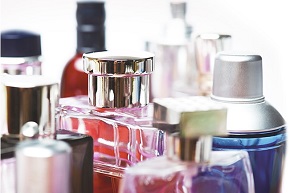
- SHIKOH ――UV Curable Resin from Mitsubishi Chemical
-
UV curable resin is garnering wide spread attention for its low-polluting, energy-saving properties and high productivity.
Mitsubishi Chemical offers a wide lineup of such resin under the SHIKOH brand name, with a special emphasis on urethane acrylate oligomer.
In addition to hard coating application, SHIKOH is suitable for use in a wide range of applications. Mitsubishi Chemical's SHIKOH holds the key to the future of ultraviolet curable resin.
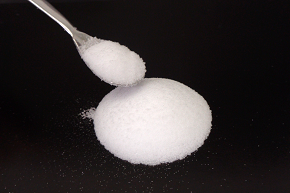
Acrylic Beads Resin
Acrylic beads resin is a solid bead-shaped methacrylic resin produced by suspension polymerization. Being solid and non-hazardous, customers can choose their own solvents, and it is easy to transport and store. We have manufacturing sites and sales networks around the world, enabling us to supply globally. We provide free samples from 500g for customers' initial study.
Acrylic Resins for Coating
[Close]

- We maximizes the potential of acrylic resin as a coating material
-
Based on the basic features of acrylic resin such as "transparency" and "high weather resistance," Mitsubishi Chemical contributes to solving customers' problems with its abundant product lineup and prompt and comprehensive customer service.
Utilizing our own methacrylate monomers, we produce and sell globally competitive and stable quality products.
Our resins are being used in a wide range of applications such as paints, inks, and adhesives.

Acrylic Powder Resin
Acrylic powder resin is a fine powder resin made by spray-drying acrylic resin emulsion on particles. Core/shell type structural design is possible, and we are developing products that can demonstrate their characteristics in various applications. It shows good solubility in various solvents and liquid resins.
Developed to respond to the increasing trends toward compactness and high speed of printers, this product has attracted considerable attention. We intend to develop into the field of color toners to expand the potential market further.
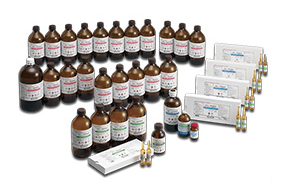
AQUAMICRON™ is a high-precision reagent designed for a wide range of moisture measurement applications using the Karl Fischer method. Our comprehensive lineup includes reagents for both coulometric and volumetric titration, as well as certified water standards.
For coulometric titration, we offer combinations of anolyte (e.g., AX etc.) and catholyte (CXU), along with convenient single-solution electrolytes (FLS) that simplify maintenance. For volumetric titration, our portfolio includes traditional pyridine/chloroform-based titrants (SS series), as well as environmentally friendly pyridine-free and chloroform-free alternatives (SS-Z series), complemented by a variety of dehydration solvents tailored to different sample types.
This website provides access to detailed catalog, technical manual, instructional videos, FAQ, and request forms for SDS and COA documentation.
Roller (CARBOLEADER ™)
[Close]

CARBOLEADER™ is a carbon roller that simultaneously offers light weight, high rigidity, and a high critical number of revolutions. It is used for a wide range of applications, including separators for rechargeable batteries, for optical applications and all kinds of films, for printing, and paper manufacture. It can significantly increase productivity and reduce costs by improving production quality and speed, and reducing defect rates.
C/C composite, C/SiC composite
[Close]

C/C (carbon fiber reinforced carbon) composites are made of carbon matrix reinforced with carbon fiber, and have high strength, high elasticity, high toughness, and ultra-high heat resistance, and can be used at temperatures above 1,000ºC.
C/SiC, also known as ceramic matrix composite (CMC), is a composite material with a ceramic matrix, and our CMC is reinforced with carbon fiber. It has higher strength and elasticity than C/C composite, and can be used in a wider variety of applications.

Carbon fiber composite materials, also known as carbon fiber reinforced plastics (CFRP), are composite materials made of carbon fibers and resin (mainly epoxy resin).
As light, strong, and hard materials, they are used in wide range of applications such as sporting goods, industrial, aircraft and automobile components. By selecting suitable resin, it is possible to add features like heat resistance, impact resistance, and flame retardant, and thus provide superior characteristics not found in conventional metals and ceramics to enable a reduction in the weight of parts, give freer design.
Carbon Fiber Pellets
[Close]

Carbon fiber pellets are thermoplastic molding materials created by blending carbon fiber with various resins to achieve performance that is superior to conventional reinforced resins. Advanced physical properties can be achieved by combining different base resins and carbon fibers, according to the specific application.
Carbon Fiber FMC (CF-SMC)
[Close]
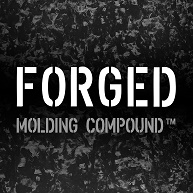
Carbon Fiber FMC (CF-SMC) is a sheet-type intermediate material made of cut high-strength carbon fiber impregnated with thermosetting resin. This material can be press molded, substantially reducing molding time compared to conventional autoclave or oven molding.
In addition, compared with carbon fiber intermediates of Continuous fibers, the random arrangement of Short fibers ensures fluidity and makes it possible to mold intricately shaped parts like those with ribs and bosses.

Under Development
Kyron™ ULTRA is a new sheet-like intermediate material developed by Mitsubishi Chemical, in which carbon fibers are impregnated with engineering plastics. It is a high performing carbon fiber composite material in the form of a UD (Uni-Directional) prepreg with carbon fiber in one direction.

Carbon fiber is a high-strength and high-elastic modulus material, yet its specific gravity is only one-fourth that of iron. It, therefore, enables high strength, high rigidity, and weight-saving in a wide variety of applications.
Carbon fiber tow, made of bundles of untwisted filaments, is the essential material in our carbon fiber product line.
Carbon Fiber Fabrics
[Close]

Carbon fiber fabrics have excellent drape properties which make them ideal for 3D shape applications. Due to the outstanding design possibilities they offer, carbon fabrics are also in high demand for applications that require visual appeal. As well as their design potential, carbon fabric materials offer excellent layup efficiency. You can layup a single ply in two directions.

Carbon Chopped Fiber is a product made by chopping carbon fiber tow.
Carbon Milled Fiber is a product made by grinding milling chopped fiber into a powder (milled) form.
Chopped fiber is typically around 3 to 6 mm long, while milled fiber is typically less than 200 µm long. Both of these materials are used to enhance the physical properties of thermoplastic resins and rubbers, and to increase electrical and thermal conductivity.

Compared with conventional steel plate or concrete-jacketed reinforcements, REPLARK simplifies construction and shortens construction period by eliminating the need for heavy machinery. For its high strength, lightweight, high durability, and excellent workability, REPLARK has earned an outstanding reputation for the repair and reinforcement of bridge piers, floorboards, columns, chimneys, and for other structural applications.
e-Plate/Leadline: This repair and reinforcement material enables reinforcement by simply attaching or embedding prefabricated carbon fiber reinforced plastics (CFRP), without the need for resin impregnation or for layering the required amount of reinforcement, as in the case of repair and reinforcement using carbon fiber sheets, thereby reducing construction time and improving construction quality.

ZEBREX™ is cutting-edge zeolite membrane dehydration process, which can dehydrate solvents under a wide range of water concentration and pH conditions, and is a one-pass continuous process rather than a batch process.
ex.) Ethanol, Isopropanol, Acetone, Methyl Ethyl Ketone, Tetrahydrofuran, etc.

DIAION™ AMP03 is an amphoteric ion-exchange resin with a quaternary ammonium group and carboxy group incorporated into the crosslinked polystyrene backbone. Thanks to uniform 260 µm beads size, AMP03 realizes sharp elution peak in the separation of electrolytes from non-electrolytes, between electrolytes (sodium chloride and sodium sulfate), etc.
The Synthetic Adsorbents are cross-linked polymer spheres which provide specific surface area of 500-1200m2/dry-g with their porous structure. Available products include the aromatic-based HP series, the aromatic-based SP series, and the methacrylate ester-based HP2MGL. They are used for the adsorption purification of peptides, proteins, polyphenols, cephalosporin C, etc. as well as for the removal of bitter-tasting substances from fruit juices.
A chelating resin has a functional group that is capable of forming a chelate (complex) with a metal ion. The specific metals that can form chelates with the functional group can be captured. In the DIAION™ CR Series, there are three product types: (1) for common metals -- DIAION™ CR11 with the iminodiacetic acid functional group, (2) for metals other than alkali metals (Na, K, etc.) or alkaline earth metals (Ca, Mg, etc.) -- DIAION™ CR20 with the polyamine group, and (3) for selectively capturing boric acid --- CRB03 and CRB05 with the methylglucamide group.
The low-odor, low-leachable anion exchange resin reduces the release of total organic carbon (TOC) and amines to prevent offensive odors.

The weakly basic anion exchange resins use either a polystyrene or polyacrylic ester frame and a primary-ternary amino group as the functional group. Although the anion of a salt like NaCl or Na2SO4 cannot be exchanged, the exchange of an anion of a mineral acid such as HCl and H2SO4, or the salt of a weak base like NH44Cl can be carried out.

An amino functional group is incorporated into the anion exchange resin enabling the exchange of anions like the Cl- ion and the SO4-- ion. Strongly basic anion exchange resins and weakly basic anion exchange resins can be defined according to the basic strength of the amino functional group.
The ion exchange resin that has a quaternary ammonium group is strongly alkaline and dissociates just like NaOH and KOH. Therefore it is called a strongly basic anion exchange resin.

The weakly acidic cation exchange resins have the carboxylic acid group (-COOH) as the exchange group. There are two kinds --- a methacrylic acid type and an acrylic acid type. The acrylic acid weakly acidic cation exchange resin is used for processing water with high carbonate hardness. The methacrylic acid type is used for purification of antibiotics and amino acids.

The strongly acidic cation exchange resins are bead-like products which have a sulfonic acid group in the cross-linked styrene frame. They can be used across the full pH range (0-14), and are relatively stable to temperature, even withstanding high temperatures of 100-120℃. They are used in a wide variety of fields including water purification, water softening, wastewater treatment, purification of pharmaceuticals and food, and catalysis.
Synthetic Paper , YUPO™
[Close]

"YUPO" is a synthetic paper made from polypropylene resin as its primary material. It offers extraordinary beauty, strength and flexibility. YUPO combines the advantages of both paper and plastic film, and thanks to its unique qualities, it is used widely in several fields, including the commercial printing, packaging and communication paper.
Separation & Purification System
[Close]
Water Treatment System
[Close]
Airtight Sheet for Housing
[Close]

Airtight design of houses prevents indoor air from leaking outdoors and at the same time shuts outdoor air off, increasing the effectiveness of air conditioning, contributing to energy saving. Furthermore, airtight sheets prevent vapor generated indoors from entering heat-ray intercepting material, eliminating internal condensation and by maintaining performance of heat-insulating material and assists in the prevention of wood corrosion, improves the durability of houses.
Plastic Filtering Plate
[Close]

Made form high quality polypropylene (PP), our wide range of filtering materials for filter press machines include lightweight filter plates with excellent chemical resistance and high impact strength, plastic membranes with superb thermal and chemical resistance, and filter-press-plate unit combined with anticorrosive plastic membrane.
Polycarbonate Sheet, HISHICARBO™
[Close]

Designing comfort and safety of diversifying exterior applications
Our polycarbonate sheets for exterior use are an easy-to-use transparent material with excellent weather and shock resistance. For this reason, it can be bent for installation to fit sashes at room temperature, responding to sophisticated design needs. It also increases the flexibility of future structures as flame resistant roof material to direct sunlight into a house.
Water Purifier, Cleansui
[Close]

Home water purifier using hollow fiber membrane material. We off a full lineup of high-performance water purifiers including faucet-mounted models, pitcher models, built-in models, and commercial models. We provide the water necessary for life through products to stockpile water for long periods of time and water-softening shower heads with built-in cartridges.
Refer to the Cleansui website for more information.
- Product Finder
-





